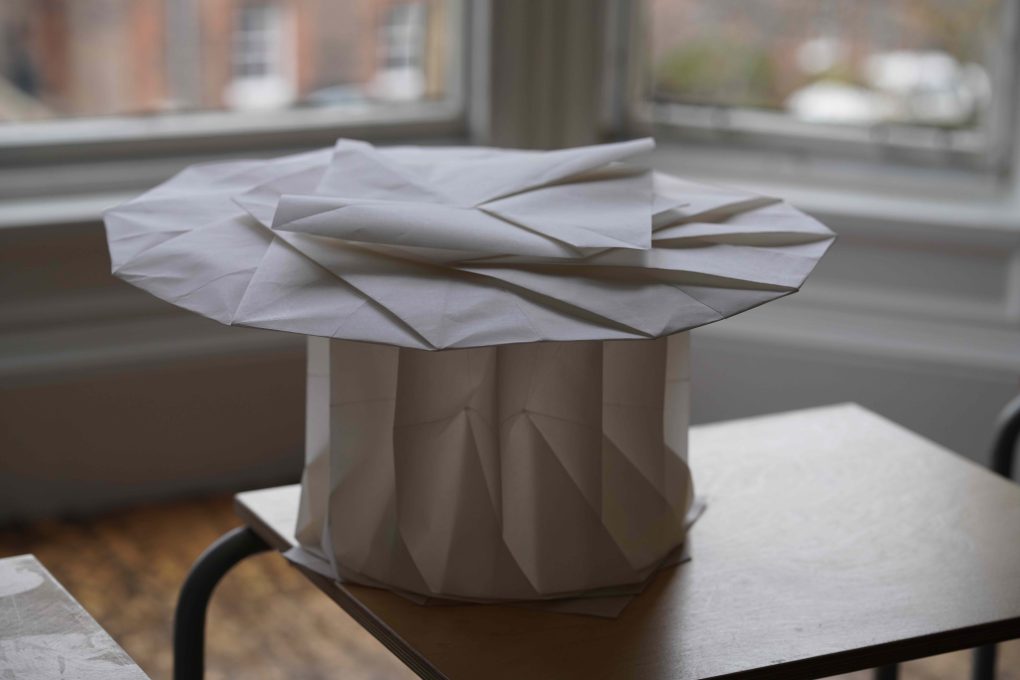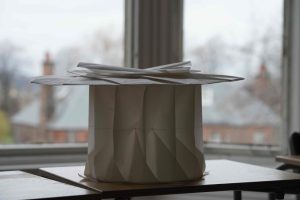A Craft, A Product Design, A Building?
January 31 2023

Buildings play an important role in our pedagogy. Pupils study Architecture as part of the Main Lesson Programme; and recently, ESS has invested over £1million in the development of our campus, with the help of philanthropists who care about our school.
Architecture is what we create between the given forms of nature and the structure of our own physical body. We put ourselves “into” our buildings and they affect our environment as they work back upon us. As Winston Churchill said during the rebuilding of London after the bombings of WWII, “We shape our buildings and our buildings shape us.”
Last term Class 12 finished a 4-week block on the History of Architecture, a subject that explores the connections in the humanities (history, anthropology, archaeology, mythology and literature), mathematics, and the science of engineering, not to mention art and aesthetics.
In this way it provides a solid foundation for starting this last year of school, as it supports young adults in their own search for balancing inside and outside – inner life and outer reality, and provides a perfect keystone for centring many fields of study. By way of drawing, writing, hands-on projects, oral presentations, and discussion, pupils begin to see the built environment around them in an entirely new way.

Rudolf Steiner, Ph. D., the founder of Waldorf education, was not trained as an architect, yet he designed and had built some twenty-four buildings during his lifetime, including the internationally acclaimed first and second Goetheanum buildings in Switzerland. His architecture has inspired the building of hundreds of Waldorf schools. He said that in the future, buildings would have the power to ‘speak’ to us. That they would influence us in such a way that they could even prevent crime and wrongdoing simply by way of their dynamic, expressive forms. Understanding the history of architecture can have far-reaching effects on the young person as they design their identity and build their future.
“Architecture is the will of an epoch translated into space. Mies van der Rohe.
A survey is made of the many varied architectural movements that have come into being since the beginning of human civilisation. The Class studied the aims that each movement had at its core, and as a more detailed study took individual architects and buildings characteristics of each one. The questions were put, of how we approach architecture by the function: structure and material, the space, the culture and social issues of the civilisation of the time and by the 4 dominant technologies in all aspects of society and culture: hunting/ gathering (Neolithic), agriculture, industrial revolution, electronic (information/ biotech).”
The Main Lesson pushes their mind to a different dimension of creativity, pushing the boundaries. The designs below could be an origami craft. They could be lampshades. or they could be designs for a futuristic building. Then you explore the materials. Are they sustainable for human nature. Does it work with human nature, or does it break down societies? What impact does it have on the physical and mental wellbeing? Each pupil looks at a building in great depth.
Practical part of Architecture Main Lesson (above) by Class 12 pupil, Tom. His reflections can be read here.
Read on: Edinburgh Steiner School’s weekly ezine
News pieces:
School calendar dates
College News
Parent Teacher Association News
Management Surgeries
Class Convenors Group Re-Established
Book Launch: Brown Girl
Later School Finish Survey Closing Today
GSP Receives Over £8k In Donations Over Weekend
Over £1 million Invested In Steiner Campus
A Craft, A Product Design, A Building? – Steiner Waldorf Main Lesson Programme
Adverts from school community



